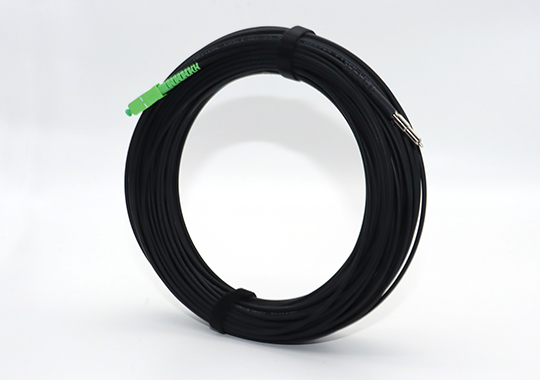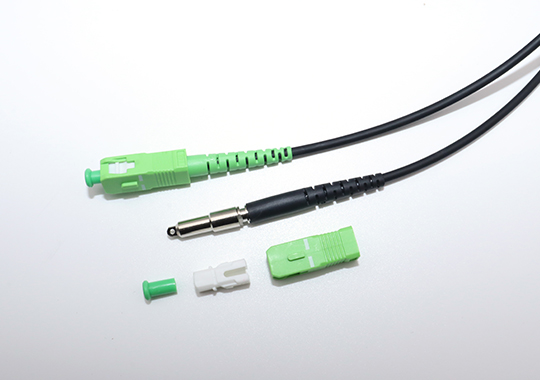In the fast-evolving world of fiber optics, pullable fiber cables have emerged as a game-changing solution for high-density, scalable network deployments. Whether you’re upgrading data centers, deploying 5G infrastructure, or optimizing enterprise networks, understanding these cables’ design, applications, and selection criteria is critical. This blog post breaks down everything you need to know—and why partnering with experts like us can elevate your project’s success.

What Are Pullable Fiber Cables?
Pullable fiber cables are engineered for easy installation and reconfiguration in tight or complex pathways. Unlike traditional fiber cables, they feature retractable or semi-rigid designs that allow technicians to “pull” them through conduits or ducts with minimal force, reducing the risk of damage. These cables are ideal for:
- High-density data centers requiring rapid reconfiguration.
- Industrial environments with limited pathway access.
- Retrofitting legacy networks without disrupting existing infrastructure.
Categories of Pullable Fiber Patch Cables
- By Connector Type
- MPO/MTP Cables: Designed for parallel optics and cloud-scale networks, these offer high-density 12/24-fiber connections 1.
- LC/SC Cables: Common for enterprise switches and telecom applications.
- Armored Cables: Reinforced for harsh environments (e.g., outdoor or industrial use) 12.
- By Application
- Data Center Cables: Pre-terminated solutions for quick deployment (e.g., Sun Telecom’s MPO/MTP cassettes) 10.
- Industrial Cables: Oil-resistant, UV-resistant, and flexible for extreme conditions.
- Military/Aviation Cables: Ruggedized for shock and vibration resistance.
- By Structure
- Breakout Cables: Individual fibers for flexibility.
- Distribution Cables: Compact design for high-fiber-count needs.
How to Choose the Right Pullable Fiber Cable
- Assess Your Environment
- Temperature Range: Ensure compatibility with operating conditions (e.g., -40°C to +85°C).
- Chemical Exposure: Opt for LSZH (Low Smoke Zero Halogen) jackets in hazardous areas 7.
- Mechanical Stress: Armored cables for heavy-duty use; flexible cables for dynamic environments.
- Prioritize Performance Metrics
- Insertion Loss: Aim for ≤0.3 dB for critical links (e.g., Intel’s glass-based optical bridges achieve 0.33 dB) 1.
- Bend Radius: Maintain ≥10x cable diameter to avoid signal degradation 8.
- Pull Strength: Industrial cables should withstand ≥1,000 N of force.
- Future-Proofing
- Scalability: Modular designs (e.g., TSMC’s COI platform) allow seamless upgrades 1.
- Compliance: Verify certifications like RoHS, UL, and Telcordia GR-20.

How to Use Pullable Fiber Cables Effectively
- Installation Best Practices
- Pre-Pull Preparation: Clean conduits thoroughly and use figure-8 loops to prevent twisting 6.
- Lubrication: Apply cable lube for long or multi-bend routes.
- Tension Control: Avoid over-pulling; use winches with tension monitors 11.
- Post-Installation Maintenance
- Regular Inspections: Check for kinks, cracks, or connector contamination.
- Proper Storage: Coil cables loosely to avoid stress on fibers.
- Troubleshooting Tips
- Signal Loss: Use OTDRs to pinpoint faults locations.
- Connector Issues: Clean with alcohol-free fiber cleaners (e.g., Opptex Cletop-S) 9.
Key Elements to Evaluate
- Insertion Loss & Return Loss
- Critical for high-speed networks (e.g., 400G/800G). Senko’s metal-optical hybrid designs achieve <0.5 dB loss 1.
- Thermal Stability
- Ensure compatibility with high-temperature environments (e.g., SABIC’s PP compound withstands 800°C+).
- Mechanical Durability
- Look for reinforced jackets and strain relief designs.
- Vendor Support
- Partner with suppliers offering customization (e.g., Fiber-Mart’s premade cables for rapid deployment) 12.
Why Partner With Us?
At Bativ, we specialize in tailored fiber optic solutions for industries ranging from telecom to aerospace. Our products include:
- Pre-Terminated MPO/MTP Cables: Factory-tested for zero insertion loss.
- Armored & Flexible Cables: Rated for harsh environments.
- Custom Lengths & Connectors: Reduce installation time and costs.
📞 Contact Us Today!
- Need a bulk order? Ask about our volume discounts.
- Require technical support? Our engineers are ready to assist.
- Curious about our 24/7 after-sales service? Reach out now!
📧 Email: [email protected]
🌐 Whatsapp: +86 13817004898
Final Thoughts
Pullable fiber cables are the backbone of modern networking. By choosing the right type, adhering to installation best practices, and partnering with a trusted supplier, you can future-proof your infrastructure and achieve unparalleled reliability. Don’t settle for less—elevate your network today!